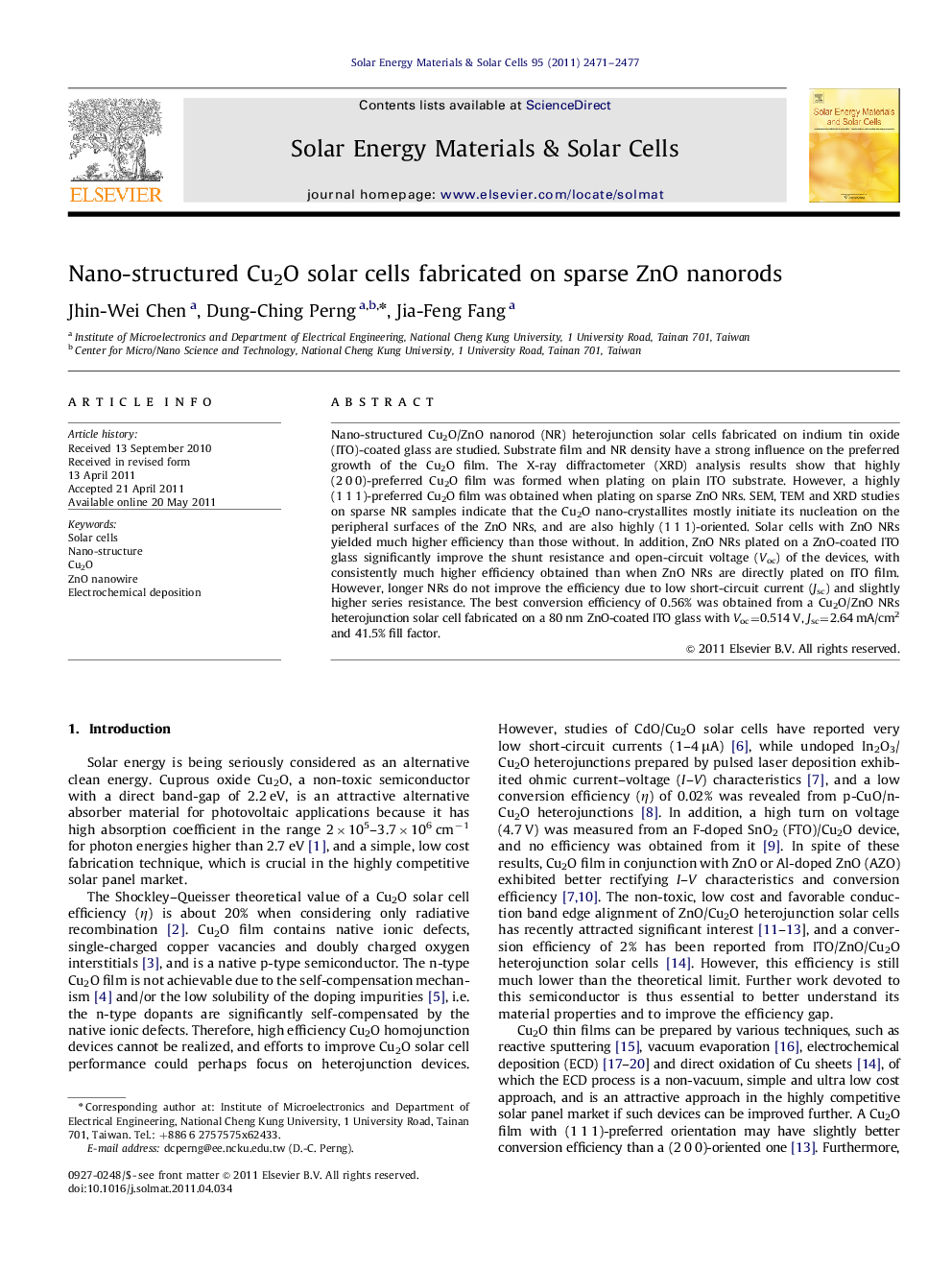| Article ID | Journal | Published Year | Pages | File Type |
|---|---|---|---|---|
| 78808 | Solar Energy Materials and Solar Cells | 2011 | 7 Pages |
Nano-structured Cu2O/ZnO nanorod (NR) heterojunction solar cells fabricated on indium tin oxide (ITO)-coated glass are studied. Substrate film and NR density have a strong influence on the preferred growth of the Cu2O film. The X-ray diffractometer (XRD) analysis results show that highly (2 0 0)-preferred Cu2O film was formed when plating on plain ITO substrate. However, a highly (1 1 1)-preferred Cu2O film was obtained when plating on sparse ZnO NRs. SEM, TEM and XRD studies on sparse NR samples indicate that the Cu2O nano-crystallites mostly initiate its nucleation on the peripheral surfaces of the ZnO NRs, and are also highly (1 1 1)-oriented. Solar cells with ZnO NRs yielded much higher efficiency than those without. In addition, ZnO NRs plated on a ZnO-coated ITO glass significantly improve the shunt resistance and open-circuit voltage (Voc) of the devices, with consistently much higher efficiency obtained than when ZnO NRs are directly plated on ITO film. However, longer NRs do not improve the efficiency due to low short-circuit current (Jsc) and slightly higher series resistance. The best conversion efficiency of 0.56% was obtained from a Cu2O/ZnO NRs heterojunction solar cell fabricated on a 80 nm ZnO-coated ITO glass with Voc=0.514 V, Jsc=2.64 mA/cm2 and 41.5% fill factor.
Graphical abstractFigure optionsDownload full-size imageDownload as PowerPoint slideHighlights► Nano-structured Cu2O/ZnO nanorod solar cells have been fabricated on ITO glass using all ECD process. ► Best conversion efficiency of 0.56% was obtained with Voc=0.514 V, Jsc=2.64 mA/cm2 and 41.5% fill factor. ► A highly (1 1 1)-preferred Cu2O film was obtained when plating on sparse ZnO nanorods. ► Cu2O solar cells with ZnO nanorods yielded much higher efficiency than those without.
